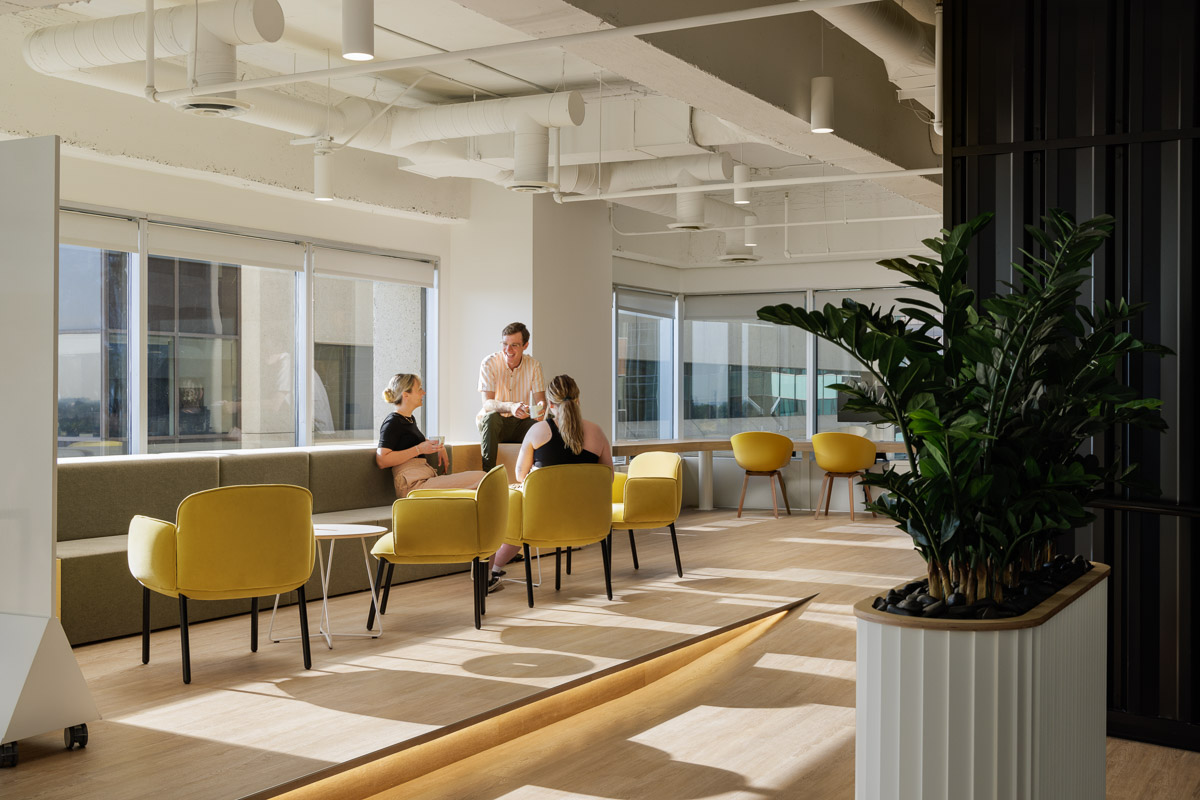Designing for well-being: How interior design impacts health and happiness
Prioritizing empathy, daylighted areas, and natural elements transform living and working spaces into environments that actively support health and well-being.

Design matters. In a fast-paced world where stress and distractions seem ever-present, the importance of designing spaces that nurture our well-being cannot be overstated. Our industry extends far beyond aesthetics, and has a profound impact on our physical, mental, social and emotional health. From the colours on the walls to the furniture we choose, every design decision can contribute to health and happiness. In this HQ Think Series, we explored how prioritizing wellness contributes to building a company people enjoy working for.
Prioritize empathy
Empathetic workplaces prioritize understanding and considering the needs, emotions and experiences of their employees. When we put ourselves in the shoes of the end-users, we develop a deep understanding of their preferences, behaviours and challenges. Empathy enables us to create spaces that are not only aesthetically pleasing, but also functional and supportive of the physical and emotional well-being of those who inhabit them. We can ask questions such as, “How do colours, textures and materials support healing?” or “Are there any specific sensory considerations, such as lighting, acoustics or materials, that need to be addressed?” or “What are the emotional and psychological goals for the space, and how should it make people feel?”
Prioritize daylighted areas
Daylighted areas not only reduce the need for electric lighting, but also positively affects our circadian rhythms and mood. Prolonged and excessive exposure to blue light, emitted by digital screens and energy-efficient lighting, can disrupt sleep patterns, causing sleeplessness and fatigue. Maximize access to natural light through well-placed windows, skylights or openings. Consider the layout and organization of spaces to ensure that workstations, seating areas, and functional zones receive ample daylight. Lighting solutions, such as the use of natural light and adjustable fixtures, can also contribute to a healthier work environment.

Biophilic design
Natural elements, such as plants, water features, and natural materials like wood and stone, appeals to our sense of touch, sight and even smell. Biophilic design, as it's known, connects us with nature, reducing stress, enhancing creativity and improving air quality. Biophilic design also aims to maximize natural light and ensure proper ventilation. These elements can make a world of difference in the quality of our indoor spaces. Consider strategically placing windows throughout a space to enhance human connection visually to the outdoors. Well-lit areas create a sense of spaciousness and boost mood, while fresh air circulation is essential for our physical health.
Mindfulness spaces
Mindfulness spaces in the workplace are increasingly recognized as essential elements for employee well-being and productivity. These designated areas serve as retreats from the hustle and bustle of the office. They give employees opportunities to regroup, unwind, reduce stress and return to their tasks refreshed. If your workplace culture values mental health, consider injecting cozy nooks, meditation spaces or even napping pods. You can also incorporate soothing elements such as natural materials, soft lighting, and comfortable furnishings.

Our surroundings play a crucial role in shaping our experiences. Incorporating these elements transform living and working spaces into environments that actively support health and well-being. When we prioritize elements like natural light, ergonomic furnishings and sound control, it enhances the comfort and health of employees. This, in turn, leads to reduced stress, increased job satisfaction and enhanced overall productivity. Employees feel more valued, and their well-being is supported. For companies, the advantages are equally compelling. Healthier and happier employees are more engaged, which can lead to increased retention rates and a more attractive workplace for top talent. Ultimately, designing for well-being isn't just a trend; it's a strategic investment that can pay dividends in terms of employee satisfaction, performance and long-term success of an organization.


